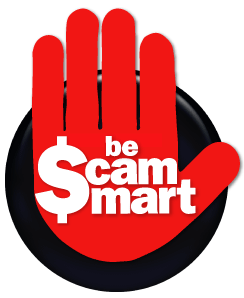I am often amazed at the carefree attitude the majority of shoppers have with their personal information when they are making purchases, wandering about the malls, or seeking financing for that new 60″ plasma screen TV.
By the time you finish reading this article you will be adopting safer, more ‘attentive’ habits while shopping.
First, how many of you reading this have your Social Security Card in your purse or wallet right now? Stop reading, go get your wallet or purse and take your card out of there. Place it in a secure place within your home. Ideally in a home safe that is fireproof, and waterproof. There is no reason to have your SSC on you at all times.
Many employees at stores are robotic and ask for this information, because that is what they were trained to do. Yet, the store or company has no need for this information. You have the right to ask, “Why do you need my social?” Unless it is your bank, broker, financial institution you initiated a relationship with, a potential lender, or your employer. You are not required to give them your Social Security Number. Some companies will act like they are entitled to obtain this information. Other companies will not do business with you if you do not give them your SSN. Weigh your options as to whether you wish to do business with such a company. If you must do business with a company like this, request to be provided with a copy of their privacy policy. That request will sometimes back them down.
Your SSN is the ‘Holy Grail’ of who you are. Since it is a commonly accepted statistic that 11 people are already using your SSN. Don’t carry it with you If you were to loose your wallet or purse the number of people using your SSN could easily surpass 20-30. Let someone else take the risk, leave your card at home locked up.
Here is a bonus tip for you: Your medical insurance card may have your SSN as the policy number. If that is the case then take that card out of your wallet also. Even if something was to happen and you need to go to the hospital, insurance information can be verified at another time. This might pose a hassle, but since you are reading this, I am assuming you want to improve your personal information security.
Next, have you noticed anyone standing close to you in line at the checkout? I mean really close like ‘they want to get to know you’. In actuality, they may be trying to get to know you. They could be surfing you (aka shoulder surfing). What this term means is that they are surfing ‘looking’ over your shoulder. This can be more common than you think. The person ‘talking on their phone’ can actually be snapping a picture, with that phone. Their target is your credit card or check while you have them out for your purchase. To combat this simply keep those valuable items covered as much as possible during the purchase process. When using a keypad for your purchases use your free hand to cover the numbers as you enter your PIN. If it fits your personality, ask them to step back while you make your purchase. Let them know you want to have some privacy during the transaction, because you are alert to the risks of Identity Theft. Be very weary of people like this.
Since we are talking the point of purchase here let’s go to the internet point of purchase. Internet shopping is one of the first places people think of in terms of vulnerability. But, shopping online can be safe. If, you are smart about your activities. When on an e-commerce site look around for security measures before looking for specific products. Quality shopping sites will have obvious security measures in place. Look for icons like VeriSign Certified with the ‘checkmark’ or the TRUSTe logo as a first indication of site security. Just because you don’t see these logo icon doesn’t mean the site is not secure. Once you pick your merchandise and head to the checkout, does your browser address bar turn yellow? This is an indicator that the page you are viewing is a secure page. Another thing to look for or may be present is a padlock that is locked. This signifies a secure page as well. These are just a few things that you can look for in your internet shopping adventures. There are many more. But, this will get you thinking on the right path.
When shopping online, you should have one credit card designated for this use only. Reason being, it is much easier to scrutinize every charge on that card and dispute any charge that is not recognized. Explore the possibilities of a pre-paid credit card for online use. The amount a thief could get is limited to what you have on the card. Only recharge the card for purchases you know you are going to make.
In closing, this is a good time to remind you that you have 60 days to dispute unauthorized activity for your ‘REAL’ credit cards. If you use a debit card, even with the Visa logo, you have 2 business days to dispute those charges. Beyond those timeframes you could be held liable for the charges.
Be aware of your surroundings. Be aware of your risks. Be empowered.
Related Posts
Submit your review | |








